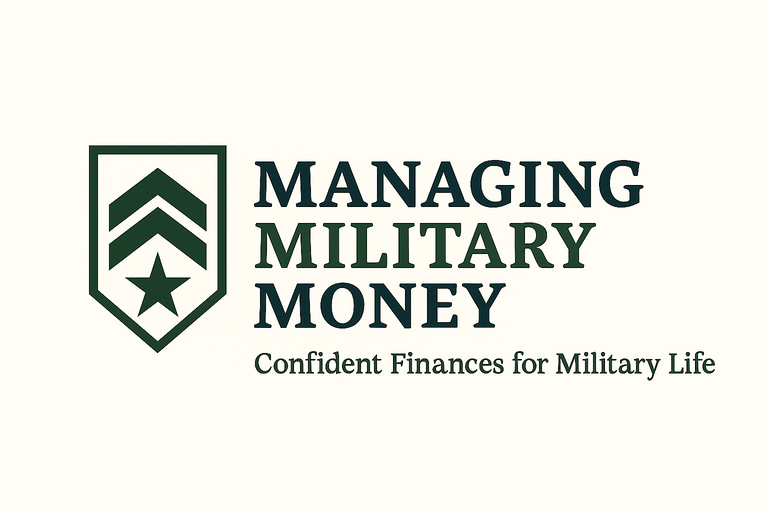Furlough
You're not getting paid. Now what?
10/5/20253 min read


What to Do with Your Money During a Military Furlough (Stay Calm & Stay Smart)
Hey friend,
If you’re an active military member seeing “furlough” or “pay delay” pop up in the news, I want you to take a deep breath. Yes, it’s stressful. But it doesn’t have to derail your finances entirely. You can make thoughtful moves now to protect your stability — even when your income is temporarily paused.
I’ve got you — here are practical steps, we can get through this together.
1. Understand the rules & protections first
As a service member, your pay is funded differently from many civilian federal employees. During a lapse in appropriations, military members are considered excepted — meaning you’ll still be on duty (or as directed) and, by law, you will receive back pay once funding is restored.
Benefits like health and retirement usually continue during the shutdown period (deductions might pause, but the protections remain).
Know the difference between “nonpay status” and “no benefits”. Just because checks are paused doesn’t mean coverage or benefits vanish.
Knowing this gives you a foundation of calm — it’s not forever, and your service entitles you to certain protections.
2. Get clarity: what you can and must pay
Not every bill is equally urgent. Use a triage mindset:
Prioritize what to focus on and why. Essentials: Rent/mortgage, utilities, insurance (auto, health), minimum debt payments. These keep your roof over your head & prevent penalties. Deferrables: Subscriptions, non-urgent repair, nonessentials. These can be paused or reduced temporarily. Negotiables: Credit cards, car loans, personal loans, call your lenders to explain and seek relief (deferment, lower payments). Everyone knows about the furlough, companies are expecting these calls. Be proactive!
💡 Pro tip: Call your creditors early. Lenders often have hardship programs. You might get reduced payments, deferred interest, or more favorable terms — but they’re less likely to help if you wait until you default.
3. Tap military-specific emergency resources
Because we serve, there are routes for help:
Army Emergency Relief (AER): Interest-free loan up to one net paycheck (for soldiers) Military Times
Air Force Aid Society, NMCRS, CGMA, etc.: Each branch has a relief organization for emergency assistance.
Zero-interest paycheck protection loans via credit unions if you qualify (some military-friendly credit unions offer this). Military Times+1
Financial counseling via the military: Most installations and Military OneSource offer free financial counselors. Use them. Military OneSource
Chain of command/family readiness centers: Be transparent — these offices are there to help and often have resources or referrals. U.S. Air Force
These aren’t “cheap-out” options — they’re safety nets when your income is paused. Use them strategically and responsibly.
4. Revisit your budget with the new reality
During a furlough, your previous plan must flex. Here’s how to adapt:
Drop non-essentials immediately (streaming, eating out, hobbies that cost money).
Temporarily reduce or pause discretionary contributions (TSP, extra payments) — not forever, just while you catch up.
Use a barebones budget: list your absolute musts, subtract from what you have (or expect), then allocate leftover funds carefully.
Keep a “buffer” or “emergency line” if possible. Even $50–$100 can help catch small surprises.
Use cash or a debit-only wallet if you struggle with credit card temptation during stress.
5. Monitor & communicate with your lenders
You’re not powerless against your bills. Doing these actions makes a huge difference:
Call lenders now (auto, credit cards, mortgage). Explain your situation — many have plans for federal shutdowns.
Document everything — names, dates, agreements you make.
Avoid predatory loans (payday, title loans, etc.). They’re tempting in a pinch, but they often trap you in cycles of debt. Consumer Advice
Ask about deferrals, forbearances, hardship programs — sometimes interest may still accrue, but missing the payment entirely can be more damaging.
6. Control what you can control
Don’t dwell on what you can’t change (how long the furlough lasts, or exactly when funding returns). Instead:
Track every dollar you do have. Write down every expense, no matter how small.
Keep lines of communication open — with your spouse, your renters, your creditors. Transparency helps prevent surprises.
Sell unused items around the house (electronics, gear, etc.) for quick cash.
Pick up short-term side gigs if allowed (base private work, tutoring, remote work) to bring in cash flow.
Stay informed — watch official military/base announcements closely so you know when funding returns or new options open.
7. Plan your comeback
The moment your pay is restored, don’t go back to 100% spending. Be intentional:
Build back your buffers (emergency fund)
Catch up on deferred contributions (TSP, etc.) gradually
Repay any emergency loans you took, mindful of interest
Review your budget again — see what you can permanently trim or improve
Wrapping It Up (Friendly Pep Talk)
You’re not alone in this. Many service members before you have walked this same tightrope. The steps above aren’t guaranteed fixes — but they give you direction instead of panic.
Stay connected, stay realistic, and stay proactive. Because even in uncertainty, good financial choices keep you strong.
— Your friends at ManagingMilitaryMoney.com
